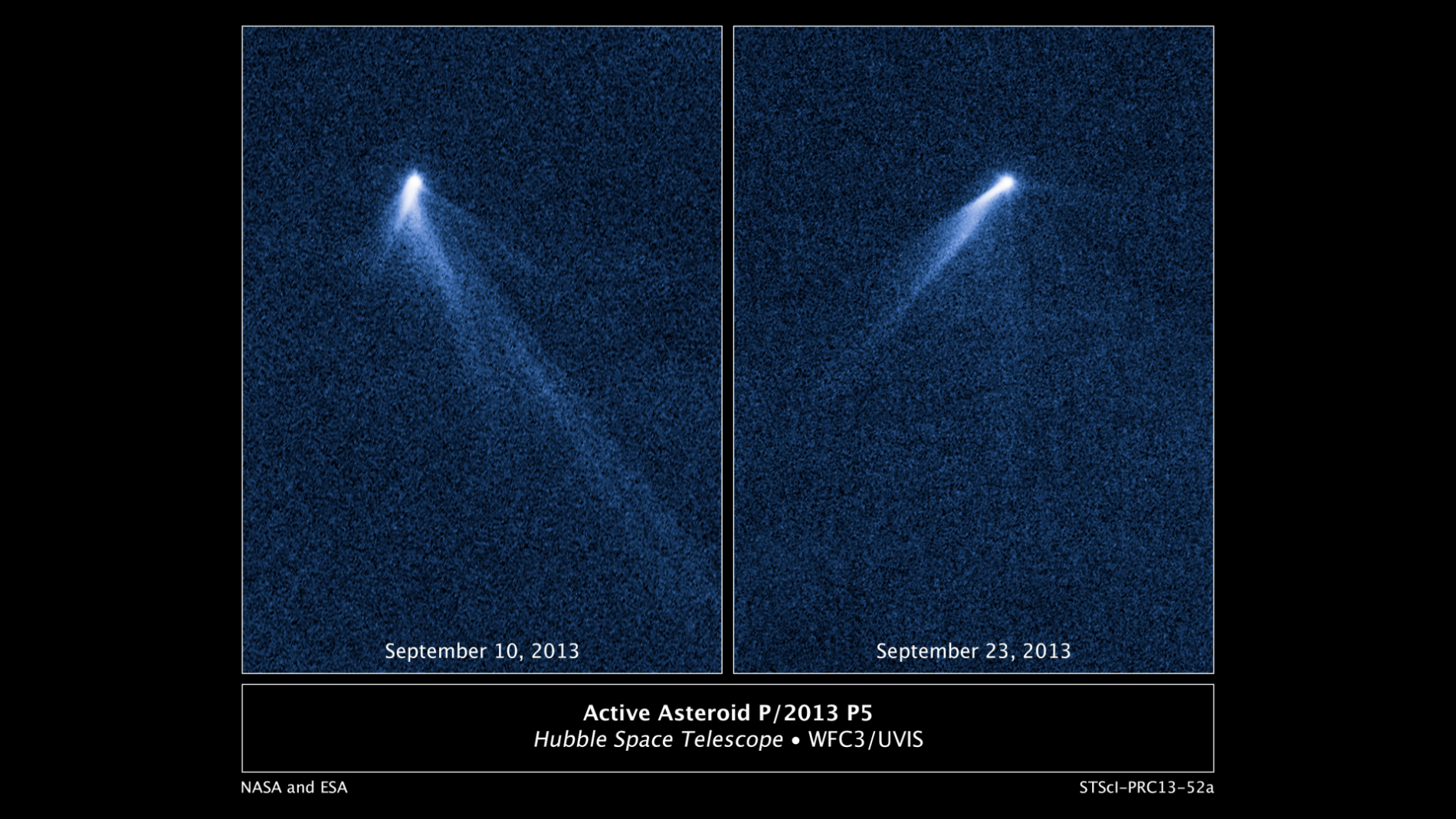P/2016 J1: an asteroid that split in two and whose fragments, years later, developed tails
Asteroids, unlike comets, do not usually present tails, but there are some twenty exceptions to this rule. P/2016 J1 is a peculiar case, known as an “asteroid pair”, resulting from the fracture of a parent asteroid
Asteroids on the main belt, situated between Mars and Jupiter, move around the Sun in quasi circular orbits, so they do not undergo the temperature changes which, in comets, produce the characteristic tails. Nevertheless, some twenty cases have been documented of asteroids which, for various reasons, increase their glow and unfurl a tail of dust. Among the latter stands P/2016 J1, the youngest known "asteroid pair".
Asteroid pairs are relatively frequent objects in the main asteroid belt. They are created when an original asteroid, either because of an excess of rotational speed or because of an impact with a foreign body, breaks in two. This can also happen as the result of the destabilization of binary systems. Asteroids that form pairs are not gravitationally linked to each other. They drift away from each other progressively, but they plot similar orbits around the Sun.
Reconstructing the orbits of asteroid pairs, astronomers can determine the moment of maximum proximity, and thereby establish the asteroid’s date of rupture.

An international group of researchers has used the Great Telescope of the Canary Islands (GTC) and the Canada-France-Hawaii Telescope (CFHT) to study P/2016 J1, an asteroid whose duplicity was discovered in 2016. "The results derived from the evolution of the orbit show that the asteroid fragmented approximately six years ago, which makes it the youngest known asteroid pair in the Solar System to date," says Fernando Moreno, researcher at the Institute of Astrophysics of Andalusia (IAA-CSIC), in charge of the project.
P/2016 J1 presents another important peculiarity, which makes it very unusual. "Both fragments are activated, i.e., they display dust structures similar to comets. This is the first time we observe an asteroid pair with simultaneous activity,” says Fernando Moreno (IAA-CSIC).
Analyses revealed that the asteroids were activated near their perihelion – the point on the orbit nearest to de Sun – between the end of 2015 and the beginning of 2016, and that they remained for a period of between six and nine months. The span of time between the moment of fragmentation and their bout of activity implies that the two events are not related. In fact, the data suggests that the fragmentation also happened near the perihelion but during the previous orbit (it takes P/2016 J1 5.65 years to spin around the Sun).
"In all likelihood, the dust emission is due to the sublimation of ice that was left exposed after the fragmentation," says Moreno (IAA-CSIC). This research project, together with the ever more frequent findings of some activity or other on asteroids, indicates that the Solar System is more active in that region than was previously believed.
Instituto de Astrofísica de Andalucía (IAA-CSIC)
Unidad de Divulgación y Comunicación
Silbia López de Lacalle - sll[arroba]iaa.es - 958230532
http://www.iaa.es
http://www-divulgacion.iaa.es

